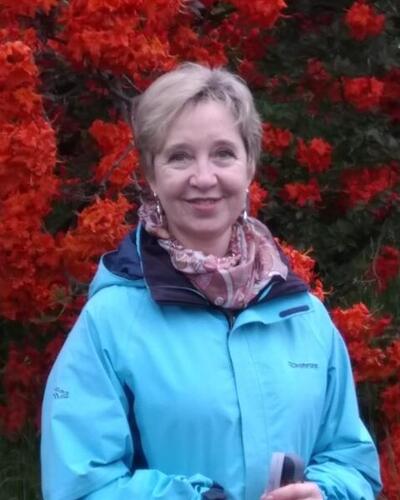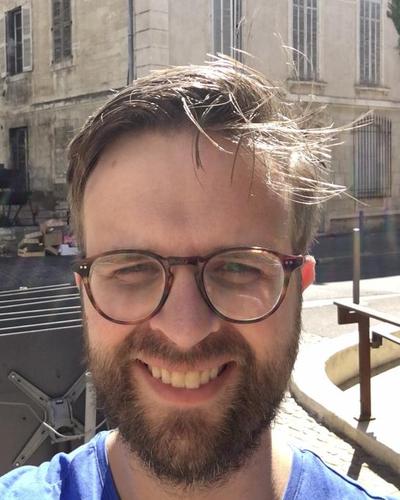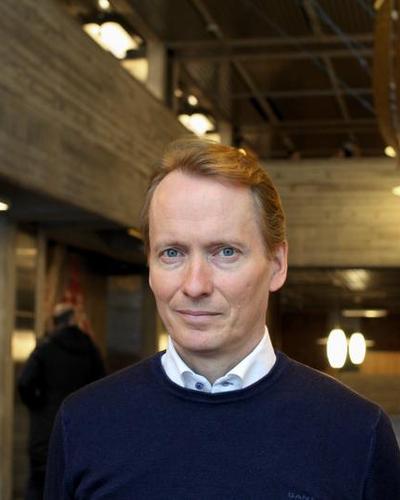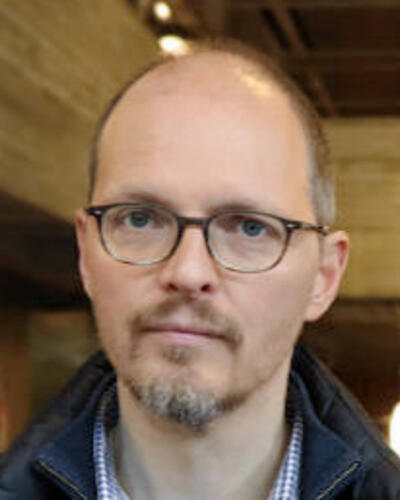Bachelor's projects
The following is a list of Bachelor's projects given by the group of Analysis and PDE. If you are interested in a project, working with a certain advisor, or just in the group of Analysis and PDE, please make contact either by e-mail, drop by during office times or attend the group seminar.
Hovedinnhold
Universal approximation theorem. Supervisors: Francesco Ballerin and Erlend Grong
E-mail: francesco.ballerin@uib.no, erlend.grong@uib.no
Requirements: Haven taken MAT211 or MAT232, alternatively taking MAT232 in parallel, is highly recommended.
Description: With the current AI-hype, and with new advanced capabili- ties of neural networks constantly being discovered, it is easy to miss the fact that these advanced operations is done using combinations of very sim- ple functions which can actually be learned. The mathematical basis for this achievement is the universal approximation theorem; all continuous functions can be approximated by functions of a given class. You may have encountered this with Taylor expansion in your calculus class or more formally with the Stone-Weierstrass theorem in MAT211. What makes the Universal approxi- mation theorem special, is that the class of functions we are considering can be parametrized by weights and biases that can be learned by the network; and that polynomials are now the class we want to avoid.
Hva lærer du? You will learn about approximating functions in L∞ (the sup-norm), the universal approximation theorem and its application to ma- chine learning.
References
[1] Wikipedia page to start: https://en.wikipedia.org/wiki/ Universal_approximation_theorem.
[2] Either the book from MAT211 (Rudin, Principle of Mathematical Analysis) and/or the book in MAT232 (Chaney, Ward, Analysis for applied mathematicians) will be useful.
[3] Hornik, Kurt (1991). “Approximation capabilities of multilayer feedforward networks”. Neural Networks. 4 (2): 251–257
[4] Pinkus, Allan (1999). “Approximation theory of the MLP model in neural networks”. Acta Numerica. 8: 143–195.
Geometrical methods for Data Analysis. Veileder: Francesco Ballerin, Erlend Grong
Epost: francesco.ballerin@uib.no, erlend.grong@uib.no
Forkunnskaper: MAT121 Linear Algebra (needed), MAT243 (might allow for more advanced topics and can be taken in parallel)Beskrivelse: As the chairman of Google once said “There were 5 exabytes of information created between the dawn of civilization through 2003, but that much information is now created every two days”. How to exploit such a humongous amount of data and make it useful is all but an easy task. Data
Analysis is the process of inspecting, cleansing, transforming and modelling such data with the goal of discovering useful information. Depending on the nature of the data and its geometry a variety of tools can be used: projection pursuit, principal component analysis (PCA) and probabilistic PCA are just some that are used for feature extraction and data reduction when dealing with Euclidean data. When the geometry of the data is not Euclidean but lies on a manifold, things get a bit more complicated.
The objective of the Bachelor thesis is to study, compare and present the most common methods for feature extraction and dimensionality reduction in the Euclidean setting. An exploration on the non-Euclidean setting is also presented if the background of the student with regards to geometry is sufficient. Concrete examples produced in either MATLAB, Python or similar can be a useful and enriching addition to the thesis.
Hva lærer du? About how geometry can be applied to data. References
[1] Burges, C. J. C. (2004). Geometric Methods for Feature Extraction and Dimensional Reduction. Microsoft Research. https://www.microsoft.com/en-us/research/wp-content/ uploads/2004/12/kdd2005.pdf
[2] Tipping, M. E., & Bishop, C. M. (1999). Probabilistic Principal Component Analysis on JSTOR. Journal of the Royal Statistical Society. Series B (Statistical Methodology), 61(3), 611-622.
[3] Fletcher, P., Lu, C., Pizer, S., & Joshi, S. (2004). Principal geodesic analysis for the study of nonlinear statistics of shape. IEEE Trans. Med. Imaging
Symmetries of Homogeneous Spaces. Veiledere: Jonatan Stava, Erlend Grong
Epost: jonatan.stava@uib.no, erlend.grong@uib.noPrerequisites (taken earlier or in parallel): Needed: MAT121 Linear algebra, MAT131 Differential equations and MAT220 Algebra. Topics that might allow the students to write a more advanced thesis: MAT243 Manifolds and/or MAT323 Representation Theory.
Description: Some of the most important subsets of matrices, such as invertible matrices and orthogonal matrices, are not determined by linear equations. Nonlinear subsets of matrices that are preserved under multiplication is the inspiration of Lie groups, named after the Norwegian Mathematician Sophus Lie (1842-1899).
The 2-dimensional unit sphere is realised as the set of all points in R3 that has a given distance of 1 from the origin. Notice how the sphere remains unchanged under rotations and reflections. These rotations and reflections is a matrix Lie group acting on the sphere.
Describing the geometry of a space by a Lie group action is the idea behind homogeneous spaces, meant to be a unified way to understand non- Euclidean geometries. The goal of this project is to describe the symmetries of homogeneous spaces with a focus on the spheres and hyperbolic spaces which are important examples.
References
[1] R.W. Sharpe, Differential geometry, Cartan’s generalization of Klein’s Erlangen program, Springer 1997
[2] Frank W. Warner, Foundations of Differentiable Manifolds and Lie Groups, Springer 1983.
[3] E.P. van den Ban, Lie groups, https://webspace.science.uu.nl/ ~ban00101/lecnotes/lie2010.pdf.
Wave breaking in undular bores. Veileder: Henrik Kalisch
Epost: Henrik.Kalisch@math.uib.no
Forkunnskaper: MAT131-Differensialligninger, MAT212-Funksjoner av flere variable
Beskrivelse: A river bore is an upstream-propagating transition between different flow depths which is generally caused by tidal forces. Similar flows can also be realized in controlled environments such as wave flumes, and a number of studies have been conducted in order to understand some of the main features of bores. In particular, in Favre’s work [2] a dedicated series of laboratory experiments is described which is aimed at classifying different types of bores.
In the relatively simple situation of a wave flume, one may without loss of generality assume that the upstream flow depth is the undisturbed depth, say h0, and the incident depth is a0 + h0. Defining the bore strength by the ratio a0/h0, it was found in [2] that there are three main bore types. If the bore strength is below 0.28, the flow is laminar and oscillations of the free surface start to develop. Since in this case, none of the waves are breaking, this case is termed the purely undular bore.
If the ratio a0/h0 exceeds 0.28, then the leading wave behind the transition front starts to break, and while the flow still features oscillations, there is some turbulence associated with the breaking waves. If the ratio exceeds 0.75, a fully turbulent bore appears.
In this project, we will describe the undular bore using the shallow-water system and the KdV equation
ηt + ηx + 32ηηx + 16ηxxx = 0. (1) We will also explore whether the ratio 0.28 can be found using some fairly
simple wave models such as the KdV equation or a Boussinesq system [1]
References
[1] M. Bjørkavåg and H. Kalisch, Wave breaking in Boussinesq models for undular bores Phys. Lett. A 375 (2011), 1570–1578.
[2] H. Favre, Ondes de Translation, (Dunod, Paris, 1935).
Dispersive blow-up and freak waves. Veileder: Henrik Kalisch and Didier Pilod
Epost: Henrik.Kalisch@math.uib.no, Didier.Pilod@uib.no
Forkunnskaper: MAT131-Differensialligninger, MAT212-Funksjoner av flere variable, MAT234-Partielle differentialligninger
Beskrivelse: Freak waves are large waves that appear unexpectedly in a wave field of small significant waveheight. These waves pose a grave danger to all marine operations, and in particular ships crossing the ocean. Freak waves have been studied intensely over the last 20 years, and one mechanism for the formation of freak waves that has been proposed is dispersive focussing [2]. If a number of periodic waves are lined up in a particular manner, they may all come together at one point in space and time, and develop a very large amplitude. This phenomenon is well known in the theory of dispersive partial differential equations where it is called dispersive blow-up which can be understood at the linear level [1, 4] or at the non-linear level [3].
In this project, we will understand the linear blow-up in the KdV equation
ηt + ηx + 32ηηx + 16ηxxx = 0. (2)
We will then construct an approximation to a freak wave using numerical tools such as Matlab or python.
References
[1] Bona, J.L. and Saut, J.C., 1993. Dispersive blowup of solutions of generalized Korteweg-de Vries equations, Journal of Differential Equations 103 pp.3-57.
[2] Kharif, C. and Pelinovsky, E., 2003. Physical mechanisms of the rogue wave phenomenon, European Journal of Mechanics-B/Fluids 22 pp.603- 634.
[3] Martel, Y. and Pilod, D., 2021. Finite point blowup for the critical generalized Korteweg-de Vries equation, arXiv preprint arXiv:2107.00268.
[4] Rauch, J. Partial differential equations. Graduate Texts in Mathematics, 128. Springer-Verlag, New York, 1991.
Butcher-series and Lie-Butcher series: structure and applications. Veileder: Hans Z. Munthe-Kaas
Email: Hans.Munthe-Kaas@uib.no
Prerequisites: Needed: ordinary differential equations (MAT131).
Additional related courses: differential geometry (MAT243) and numerical analysis (MAT260).
Description: In the 1960s, J. Butcher discovered a formalism of trees that simplifies greatly the computation of order conditions of Runge-Kutta meth- ods for solving ordinary differential equations. In the past decades, this algebraic tool was studied and extended in a variety of contexts. In this project, we propose to study an extension of the Butcher series, called the Lie-Butcher series, that appears naturally when studying numerical integra- tors on Lie groups. Depending on the knowledge and on the interests of the student, the project can focus on the high-order integration in Rd and on Lie-groups, or on the study of the algebraic structure of B-series and LB-series.
References
[1] E. Hairer, C. Lubich, and G. Wanner. Geometric numerical integration, volume 31 of Springer Series in Computational Mathematics. Springer- Verlag, Berlin, second edition, 2006. Structure-preserving algorithms for ordinary differential equations.
[2] A. Iserles, H. Z. Munthe-Kaas, S. P. Nørsett, and A. Zanna. Lie-group methods. In Acta numerica, 2000, volume 9 of Acta Numer., pages 215–365. Cambridge Univ. Press, Cambridge, 2000.
[3] P. Chartier, E. Hairer, and G. Vilmart. Algebraic structures of B-series. Found. Comput. Math., 10(4):407–427, 2010.
[4] K. Ebrahimi-Fard, A. Lundervold, and H. Z. Munthe-Kaas. On the Lie enveloping algebra of a post-Lie algebra. J. Lie Theory, 25(4):1139–1165, 2015.
Elements of mechanical systems. Veileder: Irina Markina
Epost: irina.markina@uib.no
Forkunnskaper: MAT111-Calculus 1, MAT212-Fuctions of several variables.
Beskrivelse: In this project, we will learn the basic mathematical theory which allows us to describe the notion of some mechanical systems. Mostly, we will consider simple examples, such as a disc moving on a plane, an ideal car model with and without trails. We will formulate the main principles of mechanics, such as Newton and Lagrange principles, and conservation laws. We will study the differences between holonomic and non-holonomic constraints and what are the mathematical tools describing these different mechanical systems, and what is geometry behind them.
References
[1] Jean, Fr ́ed ́eric The car with n trailers: characterisation of the singular configurations ESAIM Controle Optim. Calc. Var. 1 (1995), 241–266.
[2] A.M.Bloch Nonholonomic Mechanics and Control. Springer, 2003.
Fra kontinuitet til deriverbarhet. Veileder: Irina Markina
Epost: Irina.Markina@math.uib.no
Forkunnskaper: MAT211-Reell analyse.
Beskrivelse: I det første kalkuluskurset lærer vi hva en kontinuerlig funksjoner, og hvorfor det er nyttig. I denne bacheloroppgaven skal vi lære at det er forskjellige niv ̊aer av kontinuitet. Noen eksempler er H ̈older- og Lipschitz- kontinuerlige funksjoner, uniformt og absolutt kontinuerlige funksjoner. Avhengig av graden av kontinuitet, vil vi se at noen av de kontinuerlige funksjonene ikke har noen deriverte i noe punkt, mens noen kontinuitetsbegrep garanterer eksistens av deriverte i nesten alle punkter. Hvis vi deriverer en funksjon og deretter tar den primitive, kan vi miste informasjon om den opprinnelige funksjonen. Hvor mye mister vi? Hvordan avhenger det av kontinuitetsegenskapene? Alle disse spørsmålene vil vi besvare i denne oppgaven.
References
[1] D.M. Bressoud. A radical approach to Lebesgue’s theory of integration. Cambridge Univ Pr, 2008.
[2] Bernard R. Gelbaum and John M. H. Olmsted. Counterexamples in analysis. Dover Publications, Inc., Mineola, NY, 2003. Corrected reprint of the second (1965) edition.
[3] Lawrence C. Evans and Ronald F. Gariepy. Measure theory and fine properties of functions. Studies in Advanced Mathematics. CRC Press, Boca Raton, FL, 1992.
Geometrien til kurver i planet og i tredimensjonalt rom. Veileder: Irina Markina
Epost: Irina.Markina@math.uib.no
Forkunnskaper: MAT211-Reell analyse.
Beskrivelse: Denne bacheloroppgaven inviterer deg til den spennende ver- denen av differensialgeometri, som er en fin kombinasjon av topologi og anal- yse. Vi vil begynne med et svært enkelt objekt, en kurve i planet, og deretter se p ̊a kurver i tredimensjonalt rom. Vi vil studere hvordan man definerer en kurve riktig, hva det betyr ̊a være glatt, og hva en kurves lengde, hastighet og krumning er. For en lukket kurve vil vi forst ̊a forholdet mellom omkretsen og arealet begrenset av kurven. Noen av kurvene kan være veldig merkelige. De kan for eksempel være så lange at de dekker et positivt areal, men likevel holde seg innenfor et kvadrat i planet. På slutten vil vi lære hvordan egen- skapene til en flate kan beskrives ved hjelp av egenskapene til kurver som ligger på denne flaten.
References
[1] Manfredo P. do Carmo. Differential geometry of curves and surfaces. Prentice-Hall, Inc., Englewood Cliffs, N.J., 1976. Translated from the Portuguese.
[2] V. A. Toponogov. Differential geometry of curves and surfaces. Birkha ̈user Boston, Inc., Boston, MA, 2006. A concise guide, With the editorial assistance of Vladimir Y. Rovenski.
[3] John W. Rutter. Geometry of curves. Chapman & Hall/CRC Mathematics. Chapman & Hall/CRC, Boca Raton, FL, 2000.
Hvor mange forskjellige typer integraler finnes det?. Veileder: Irina Markina
Epost: Irina.Markina@math.uib.no
Forkunnskaper: MAT211-Reell analyse. Det er en fordelå ha MAT215-Mål- og integralteori, men det er ikke nødvendig.
Beskrivelse: I kalkuluskurset lærer vi om Riemannintegralet, som er ganske nyttig, ikke vanskelig ̊a konstruere, men ganske vanskelig ̊a bruke i mer avansert matematikk. Man kan spørre om det finnes andre konstruksjoner av integraler og svaret er ”ja”. I denne bacheloroppgaven vil vi studere ulike kon- struksjoner av integraler, som brukes i forskjellige omr ̊ader av matematikken. Disse ulike begrepene om integraler kan ogs ̊a være nyttige i anvendt matem- atikk, sannsynlighetsteori, stokastisk analyse, finansmatematikk, fysikk og andre anvendelser.
References
[1] M. Carter and B. van Brunt. The Lebesgue-Stieltjes integral. Undergraduate Texts in Mathematics. Springer-Verlag, New York, 2000. A practical introduction.
[2] William O. Ray. Real analysis. Prentice Hall, Inc., Englewood Cliffs, NJ, 1988.
[3] David M. Bressoud. A radical approach to Lebesgue’s theory of integration. MAA Textbooks. Cambridge University Press, Cambridge, 2008.
Geometrisk målteori. Veileder: Irina Markina
Epost: Irina.Markina@math.uib.no
Forkunnskaper: MAT211-Reell analyse og MAT215-Mål- og integralteori.
Beskrivelse: Dette er en avansert oppgave for studenter p ̊a bachelorniv ̊a. Vi vil begynne med ̊a repetere begrepet om et m ̊al p ̊a en mengde. Stort sett vil vi være interessert i ytre m ̊al, som forskjellige typer kapasiteter. Begrepet kapasitet er rent analytisk og kommer fra forsøk p ̊a ̊a ansl ̊a størrelsen p ̊a mengder som er neglisjerbare for løsninger av partielle differensialligninger. P ̊a den annen side er dette nært knyttet til den s ̊akalte Hausdorffdimensjonen til disse mengdene. Hausdorffm ̊al er et interessant tema i seg selv. Vi vil se flere eksempler p ̊a mengder der dimensjonen er en brøk, og vi vil lære ̊a derivere m ̊al.
References
[1] J. Yeh. Problems and proofs in real analysis. World Scientific Publishing Co. Pte. Ltd., Hackensack, NJ, 2014. Theory of measure and integration.
[2] Frank Morgan. Geometric measure theory. Academic Press, Inc., Boston, MA, 1988. A beginner’s guide.
[3] Pertti Mattila. Geometry of sets and measures in Euclidean spaces, volume 44 of Cambridge Studies in Advanced Mathematics. Cambridge University Press, Cambridge, 1995. Fractals and rectifiability.
[4] Kenneth Falconer. Techniques in fractal geometry. John Wiley & Sons, Ltd., Chichester, 1997.
Hamiltonsk dynamikk; geometri og beregninger. Veileder: Hans Zanna Munthe-Kaas
Epost: hans.munthe-kaas@uib.no
Forkunnskaper: MAT211-Reell analyse, MAT212-Funksjoner av flere variable, MAT260-Beregningsalgoritmer II.
Beskrivelse: Hamiltonske systemer er typiske mekaniske systemer der en- ergien er bevart, som bevegelsen til planetene i solsystemet eller en snurre- bass som spinner. I denne oppgaven skal du se p ̊a grunnleggende teori for hamiltonske systemer, og prøve ut noen numeriske metoder for integrasjon av disse. Oppgaven kan enten gjøres som hovedsakelig numeriske eksperi- menter, eller som en mer teoretisk oppgave der man g ̊ar inn p ̊a mer av den vakre geometriske teorien som ligger bak geometrisk mekanikk. Om opp- gaven legges i retning numerikk, er første referanse mest aktuelt, om det er mer geometri/teori er andre referanse den mest sentrale.
References
[1] J.M. Sanz-Serna, M.P. Calvo: “Numerical Hamiltonian Problems”, Courier Dover Publications, Jun 13, 2018 .
[2] V.I. Arnold: “Mathematical Methods of Classical Mechanics”, Springer GTM 1997.
Compressed sensing. Veileder: Anna Oleynik and Henrik Kalisch
Epost: Anna.Oleynik@uib.no, Henrik.Kalisch@math.uib.no
Forkunnskaper: MAT131-Differensialligninger, MAT212-Funksjoner av flere variable, MAT236-Fourier analyse hvis mulig
Beskrivelse: In signal processing, sampling is a process of converting a
continuous time signal s(t) into a sequence of values {sn}Nn=1. Examples of 17
such signals are a sound wave, music or speech, electrocardiogram (ECG) and electroencephalographic (EEG).
An important question is however, when is a particular sampling useful? Or, in other words, how should one sample in order to reconstruct the original signal s(t) from the given sequence?
We will start by looking at examples of failed and successful reconstruc-tion, reviewing the famous Nyquist-Shannon sampling theorem and its impli- cations. The main focus of the project, will be compressed sensing, a novel approach that allows for the effective reconstruction of a signal far belowthe Shannon–Nyquist sampling rate. This approach is not universal, and isbased on the assumption that a signal has a sparse representation in a certain domain. We will apply compressed sensing to different signals, using Matlab, Python, or any other programming language.Wikipedia: https://en.wikipedia.org/wiki/Nyquist%E2%80%93Shannon_sampling_theorem https://en.wikipedia.org/wiki/Compressed_sensing
References
[1] Taghouti,M. 2020. Compressed sensing. In Computing in Communication Networks (pp. 197-215). Academic Press.
[2] Rani, M., Dhok, S.B. and Deshmukh, R.B., 2018. A systematic review of compressive sensing: Concepts, implementations and applications. IEEE Access, 6, pp.4875–4894.
Weyl’s equidistribution theorem. Veileder: Didier Pilod
Epost: Didier.Pilod@uib.no
Forkunnskaper: MAT211 Real Analysis 18
Beskrivelse: A sequence of real numbers is said to be equidistributed if the quantity of terms which fall within an interval is proportional only to the length of the interval. Weyl’s Equidistribution theorem defines a class of such sequences: the fractional parts of integer multiples of irrational numbers.
The objective of this project is to give a proof of this result based on Fourier analysis. In the first part of this project, we will study the conver- gence of Fourier series and prove the density of the trigonometric polynomials in the continuous periodic functions. In the second part, we will use this re- sult to prove Weyl’s theorem.
Hva lærer du? Fourier series:convergence of Fourier series, convergence in the Cesaro sense, Fejer theorem. Uniformly distributed sequence, Weyl’s theorem, notion of ergodicity of a dynamical system.
References
[1] Elias M. Stein and Rami Shakarchi, Fourier Analysis. An Introduc- tion, (2003) Princeton University Press, pp 105–113.
Morse Theory: Understanding geometry through critical points of functions. Veileder: Sylvie Vega-Molino
Epost: sylvie.vega-molino@uib.no
Prerequisites: MAT212 Functions of Several Variables and MAT211 Real Analysis. Topics that might allow for a more advanced thesis: MAT243 Manifolds
Description In calculus courses, every student learns that the critical points of a function give information about the extreme values of its graph. Under appropriate conditions, it is possible to determine the local geometry of the curve (such as maxima, minima, and points of inflection) purely from knowledge of its derivative. This is then extended to the Hessian determinant for graphs of multivariable functions.
In the early 1900’s, Marston Morse introduced his theory in which the geometry of much more general spaces (including curves and surfaces, but also differentiable manifolds) is studied by considering the critical values of functions defined on them. This project will study these ideas; we will begin with the classical Morse Lemma and build up to the famous Morse Inequalities which allow one to recover the Euler characteristic (a topological property) from almost any function defined on the space.
References
[1] Milnor, J. Morse theory. Annals of Mathematics Studies, No. 51 Prince- ton University Press, Princeton, N.J. 1963
[2] Banyaga, A.; Hurtubise, D. Lectures on Morse homology. Kluwer Texts in the Mathematical Sciences, 29. Kluwer Academic Publishers Group, Dordrecht, 2004.
The Gauss-Bonnet Theorem: A beautiful result at the intersection of analysis, topology, and geometry. Veileder: Sylvie Vega-Molino
Epost: sylvie.vega-molino@uib.no
Prerequisites Needed: MAT212 Functions of Several Variables and MAT211 Real Analysis. Topics that might allow for a more advanced thesis: MAT243 Manifolds
Description: It is possible to introduce to any surface a ‘triangulation’: a set of ‘vertices’ connected by ‘edges’ bounding ‘faces’ that cover the surface. In fact, for any given surface many such triangulations exist. Remarkably, if one computes the number of vertices, subtracts the number of edges, and adds the number of faces, the result is independent of the choice of triangulation. This is called the Euler characteristic of the surface; it serves as one way of characterizing surfaces.
During the 19th century, differential geometry was created from the study of surfaces that are sufficiently ‘smooth’ enough to allow the notion of the derivative to be well-defined. The notion is surprisingly extrinsic: on such a surface, many different notions of the derivative can actually be defined. However, it is possible to use the tools of differential geometry to study the underlying topology and geometry of the surface. The astonishing Gauss- Bonnet theorem states that when any notion of derivative is defined, one can compute the Gaussian curvature of the surface, integrate it across the surface, and recover the Euler characteristic.
The purpose of this project is to follow a classical differential geometric approach to proving the Gauss-Bonnet theorem for a smooth surface in R3.
References
[1] Manfredo P. do Carmo. Differential geometry of curves and surfaces. Prentice-Hall, Inc., Englewood Cliffs, N.J., 1976. Translated from Por- tuguese.
[2] Shifrin, Ted. “Differential Geometry: A First Course in Curves and Surfaces.” Unpublished course notes. https://math.franklin.uga.edu/sites/default/files/inline- files/ShifrinDiffGeo.pdf.





